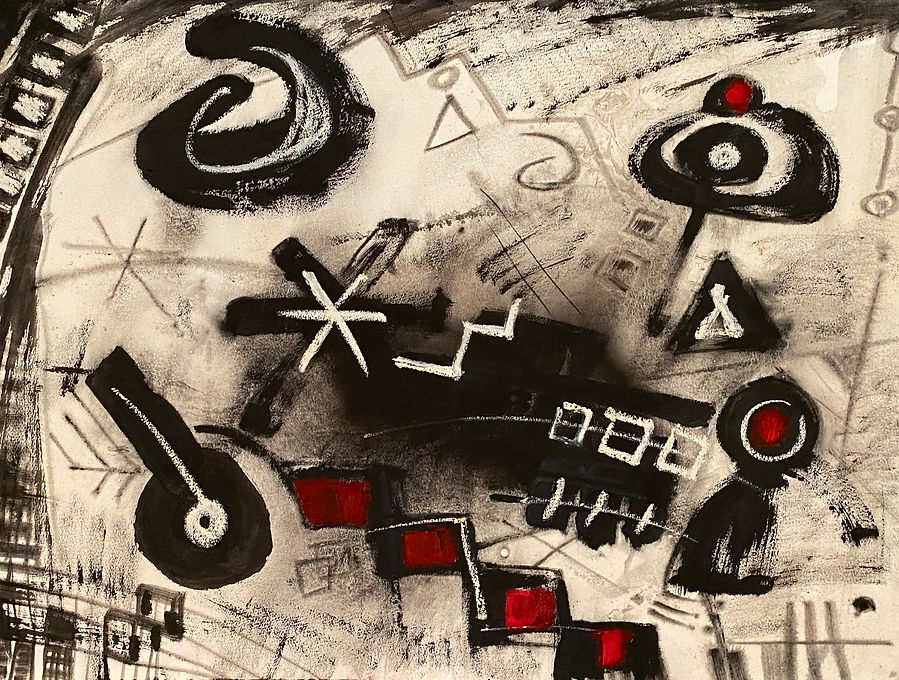SUN YU-LI
House Artist
One would characterize Sun Yu-li as the quintessential Renaissance man who has celebrated several years of success as a public sculptor. Yet while Sun Yu-li is widely recognized as a sculptor, States of Consciousness: Early Works of Sun Yu-li inaugurates the first of a series of exhibitions, highlighting his not so familiar medium on canvas and paper. The paintings contribute to chronicle and map his early artistic practice, reflecting the dawn into his complex, underlying theories and methodologies that embody his art.
Born in Nanjing, China (1948) and educated in Taiwan, architect-turned-artist Sun Yu-li has dedicated much of his early career in relentless pursuit of a “formal language of the metaphysical” which he has coined the “Universal Language”. Sun employs simple characters and images in his work to convey the experience of an epiphany of the origins of aesthetics and language. One thought is when early consciousness takes hold in young children, when drawings become the earliest development, and thus, such symbols become fundamental forms of human communication. This is then regarded as the universal system of primary expression.


As early as 1985, Sun began to establish a system of visual syntax that would help him express, unravel, and communicate these truths. His art does not originate from simulating existing forms. Instead, he conceives them as abstract expressions of forms. Still, they are far from arbitrary. The basis to which these forms are created merge with space and time, of being and becoming, be it physical or metaphysical.

Sun Yu-Li poses the most profound questions to seek definitive answers. But perhaps it is his unwavering conviction and tenacity in researching, introspecting, and ferreting out the clues, that gives him the right to investigate and find answers about the universe, from the heavens and man, to the theory of everything. In addition to his artistic and intellectual pursuits, Sun Yu-Li has been instrumental in supporting and enabling the growth of three-dimensional art and its appreciation in Singapore. Many sculptors and artists today are indebted to Sun for his effort in founding Sculpture Square (1995-2014) as a dedicated home for Singapore sculpture and other 3D art forms. And in 2007, Sun co-founded the ground-up initiative, Emily Hill Artist Village which served as a home to over eleven artists and creative organisations. Over the course of his career, Sun has contributed much of his time and expertise to charity efforts, educational outreach and in advisory roles.
House Artist
Beneath all these will eventually surface the dots, lines, planes, forms and symbols that are ubiquitous in his work (specially featured in the next series of exhibition), the root of his forty year crusade in finding the primitive association between form and meaning. Soon after, and through the early 2000s, Sun creates and experiments with steel-cut art sculptures such as the Festive series, spray painted in bright reds and dazzling silver, amongst others. On the surface, they are elegant and formal, structured yet free, deliberate yet seemingly spontaneous in his depiction of familial bonds. Beneath it, we discover form, meaning and communication as they synthesize. As we underscore his verve and daring with brushwork, form, and colour, his early paintings and sculptures also unveil impressions of the beginning of Sun Yu-li’s very own personal ontology.



